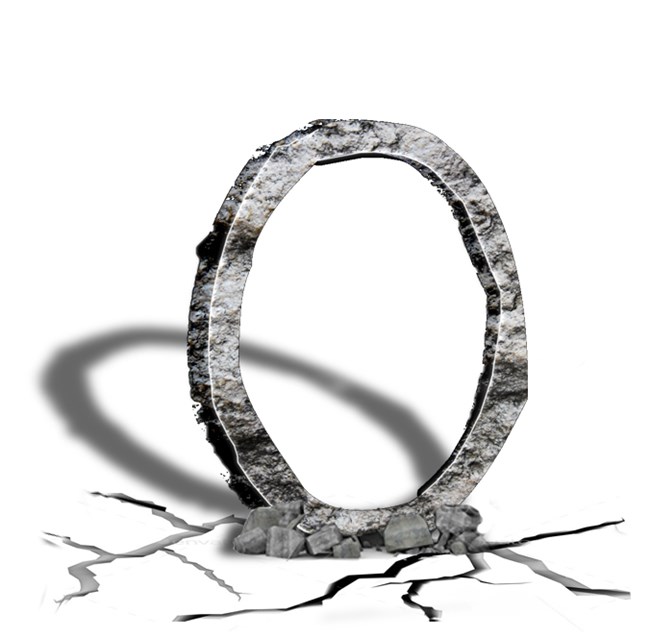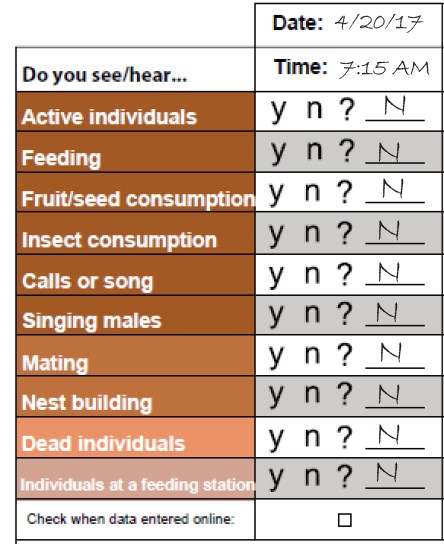Last updated: June 13, 2018
Article
The Positive Side of Zero

Zeroes and “No”s provide critical data for natural resource studies
Zero in History
The number zero is still a relatively new concept to Western mathematics. It is thought that around the year 1200, the Italian mathematician Leonardo Fibonacci brought it back with him (along with the rest of the Arabic numerals) from a trip to northern Africa. But the history of zero, both as a concept and a number, stretches far deeper into history, deep enough that we may never really know its true origins. At least as early as the 5th century Indian mathematicians were using it, though many other cultures continued to resist the idea of zero for centuries because of superstitions and the dark magic that surrounded it.Zero in Data Collection
Today the concept of zero is taught to school children around the world and it is used thousands of times a day to make calculations in a wide variety of fields. Zeroes are also an integral part of sound data collection principles. That said - it can still be hard for some folks, especially citizen scientists, to diligently record zeros appropriately when collecting data for population or other natural resource studies. The problems come when people enter “N/A” (meaning not applicable/not available), “0”s, and leave lines blank interchangeably on data sheets. These can mean different things to different people and intentions aren’t always clear to the person interpreting the data later. Proper use of these terms is of the utmost importance in distinguishing from when an observation (such as a bird sighting) was not recorded/ attempted (a missing value) from when an observer recorded no individuals (zero) during a survey. Why is making sure to record zero’s correctly so important? Let’s look at a few examples.
"Zero" and "No"in Citizen Science Monitoring
Two commonly used crowd-sourced citizen science apps also need zeroes and/or “no”’s to get a fuller picture of what is happening in the natural world. Taking them one at a time, eBird is an extremely successful web-based and smartphone controlled app that helps biologists and bird enthusiasts keep track of bird populations and movements around the globe. Users record how many and of what type of birds they can identify over a certain time-period. When submitting their data the user is asked: “Are you submitting a complete checklist of the birds you were able to identify?” The way this seemingly innocuous question is answered will have a big impact on the data. Essentially, by answering “yes”, this means that all other bird species that could potentially be in that area get a “0” entered into their “number observed” column because they were not seen. If “no” is entered then that means other species were in the area but not identified, so they will all get “N/A” put in their columns. Another group that works with citizen scientists is the USA National Phenology Network. Volunteers help scientists track the comings and goings of the seasons and all the natural phenomena that comes with them (leaf-out, flower blooms, bird migrations, fall colors, etc.). Because they are trying to track changes over time, having as complete a data set as possible is important. One of the challenges in working with volunteers is that they don’t feel it is worth their while to collect data when “nothing is happening” outside or they feel a sense of failure, for example, when entering a “No” for if they saw/heard a Hermit Thrush singing on their hiking route. To the contrary, zero and/ or “No” aren’t “no data”, they are very good and important data and in the previous example would mean that Thrush were looked for but not seen or heard. Continuing with this example, if someone was recording bird observations for the Hermit Thrush and they put that they saw a thrush on 9/10/2016 and 5/8/2017 but failed to record when observations were made between this time when no thrushes were detected, the usefulness of the data to the scientist trying to understand Thrush ecology is limited. The moral of the story here is, if you are helping out in a natural resource study, you can proudly and confidently enter 0’s and No’s where appropriate, knowing that you are providing good data that future study observers will thank you for.Tags
- acadia national park
- appalachian national scenic trail
- boston harbor islands national recreation area
- eleanor roosevelt national historic site
- home of franklin d roosevelt national historic site
- marsh - billings - rockefeller national historical park
- minute man national historical park
- morristown national historical park
- saint-gaudens national historical park
- saratoga national historical park
- saugus iron works national historic site
- vanderbilt mansion national historic site
- weir farm national historical park
- citizen science
- netn
- species spotlight
- data collecting
- data analysis
- data
- inventory and monitoring
